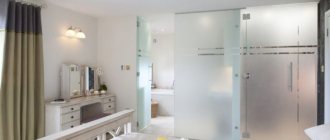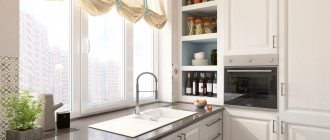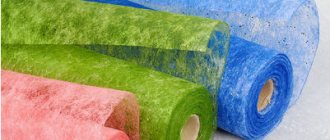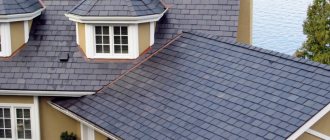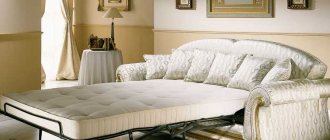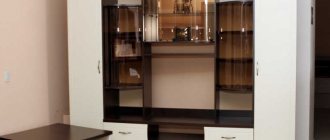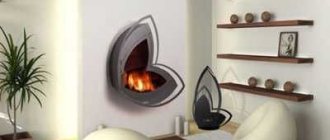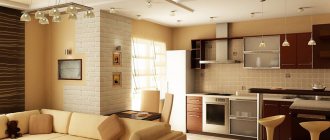Wood putty - pros
Putty work on wood is the treatment of a wide variety of surfaces: cracked, Soviet frames, new doors made of a variety of wood types, old or, on the contrary, expensive and beautiful parquet. But whatever construction goal you pursue, wood putty will have many advantages:
- The putty layer on a wooden surface prevents moisture from being absorbed, which means the wood in your home will last a long time and remain dry and healthy.
- A high-quality mixture smoothes out all the cracks, knots and natural defects that natural wood cannot do without.
- When the coating dries, it becomes transparent or acquires a surface pattern, so all natural elements in the interior can not only be painted, but also covered with decorative varnish.
- The parquet mixture adheres perfectly to the floor, fills all the unevenness and holes that appear over the years, and protects it from dirt.
There are special types of materials for wooden surfaces
Application
Wood putty is most often used for interior work, less often for exterior work. Also for:
- Restorations and when processing various surfaces;
- Decorative finishing of plywood or MDF sheathing;
- Treating freshly laid parquet floors before painting;
- Restoration of doorways and panels, frames;
- Repair of wooden floor coverings.
The direct purpose of wood putty is to hide all kinds of defects, both large and small, and prepare the coating for subsequent processing.
How to choose?
The wooden surface after treatment must be perfect - if thin grooves on the wall or dried grains of the mixture hide the wallpaper, then varnish or hack painting will not be tolerated. For those who are looking for something to putty on wood, it is important to remember the strict criteria for the putty composition:
- good adhesion (adhesion to the surface - both wood and varnish or paint);
- elasticity (for quick and easy application);
- minimal drying time (so as not to delay repairs);
- if you buy a dry composition, use small particles so that the final coating layer is smooth and thin;
- harmless to your health.
Main varieties
If you have already firmly decided that your windows, floors or doors need a protective putty layer, a legitimate question arises - how to putty the wood? Several types of mixtures are suitable for working with such natural surfaces:
- classic plaster;
- acrylic;
- polymer;
- solvent-based (nitro putty);
- oil and glue.
Gypsum mixtures are most often purchased for wooden work: it is a very elastic putty that adheres easily and holds tightly. One “but” - it can only be used in dry rooms: gypsum allows moisture to pass through.
Acrylic compounds are somewhat more expensive, but they also have a larger list of advantages: they are ideal for filling cracks in parquet, are available in various natural shades, are resistant to water and fire, dry in 4-6 hours, and most importantly, acrylic putty on wood is universal: Suitable for laminate, chipboard, and other materials. But there are also disadvantages: such a coating must be regularly updated, and large gaps must be additionally covered; acrylic alone cannot be used.
Putty can be used to seal joints between boards
The polymer (latex) putty mixture is also not cheap, but it dries quickly, lays flat and is completely environmentally safe. Ideal for working with parquet.
Nitro putties contain organic solvents, petroleum resins, and various plasticizers. Such mixtures are resistant to water and chemicals, do not shrink and are easy to sand after drying, and do not have a specific odor.
Oil compositions are prepared on the basis of drying oil, varnish, chalk, etc. They are very durable and can be used in humid rooms and outdoors. True, such putties dry a little longer than others.
The adhesive mixtures are mixed immediately before the start of putty work.
Types of putty for wooden floors
It is necessary to putty the surface of the boards in case of various defects. But on the building materials market it is presented in a wide range. Each mixture is different in its composition, so manufacturers produce putty in different shades; this is the only way to accurately convey the color of different types of wood.
From the article you can learn about such finishing material as wood putty for floors.
Solvent putty
This composition is made on a solvent basis and is actively used in the woodworking industry. Moreover, this product was used by professional builders and amateurs. This version of putty was a pioneer, because only during its use were the developers able to come up with all other types of putty mixtures.
Solvent-based putties are characterized by high strength levels, but their composition can be very dangerous and have an unpleasant aroma.
From the article you can find out how wallpaper putty is used.
Water based putty
This product does not pose any danger to human and animal life. It is very easy to use, they have an aesthetic appearance and are odorless. To remove excess, simply wipe the surface with turpentine or acetone.
After reading the article, you can find out what thickness you will have to lay plywood on a wooden floor, which is a preparation before putting putty on the plank floor.
Compared to the previous option, water-based putty dries very slowly in a jar, therefore, it has a long shelf life when the seal of the package has already been broken. Due to its high adhesive properties, the putty can be applied to a polished surface.
For any repair, it will be interesting to know how much finishing putty may be needed or how much will have to be mixed at once for a given volume, which you can find out by reading the article.
The advantages of water-based putty include the following:
- qualitatively masks flaws;
- may be used for grouting floor joints;
- does not emit harmful components, even at high temperatures;
- not affected by moisture;
- long service life;
- is not exposed to temperature changes, as a result of which the putty protects the wood from fire;
- high elasticity, thanks to which it is possible to simulate different surface textures.
It will be interesting to learn from this article what is the difference between plaster and putty.
All presented properties can be achieved only after the water-based putty has completely dried.
Oil based
This material option is considered the most suitable for a wooden surface. The putty is perfect for treating facades before painting. Oil putty is characterized by strong water-repellent properties, and the composition can withstand climate changes without crumbling or cracking. Thanks to a wide range of shades, it is possible to select the composition according to color and give the wood a natural texture without applying paint to it.
From this article you can find out how latex putty differs from acrylic putty.
Polymer (acrylic)
This version of putty is often also called acrylic. It is very popular today and is used for any construction and repair activities. The reason for this demand is its excellent performance characteristics - long-term operation, ductility and lack of shrinkage. An alternative option is Litochrome epoxy grout, but it is more often used for stone and tiles.
From the article you can find out what finishing putty for painting is and what its use is.
The composition contains polymers and plasticizers, due to which polymer putty is actively used for cladding dry and wet rooms. Thanks to this material, it is possible to repel moisture and not be subject to temperature changes. Due to the fact that acrylic putty ideally withstands loads, it began to be used for treating wooden floors.
The advantages of the material include:
- High elasticity rates. Thanks to the mixture, it is possible to fill even the smallest cracks and voids. Putty is used to seal the joints of boards in parquet.
- Does not shrink. Compared to other options, this material only needs to be applied once, and it will perfectly retain its shape after drying.
- Long term of use. Taking into account operating conditions, such a coating can please you for 3-10 years.
- The cost of polymer putty may be slightly higher than other options, but the amount spent will pay off in the first years of use. Other compositions form cracks on their surface, but acrylic will retain its original IVD for a long time.
- Wide selection of shades.
- Environmentally friendly.
- Reduces dust accumulation.
- Dries quickly.
From the article you can find out why façade putty is needed for exterior work.
In the video - putty for wooden floors:
We decide on the manufacturer
In Russian construction stores you can find various putties for wood for painting and varnish from foreign and local manufacturers - of different prices, volumes, composition and “wooden” shade.
Among the foreign ones, the most recognized is the Tikkurila special-purpose putty. It perfectly removes unevenness, copies the color of birch (oak, pine), and is suitable for rooms with any climate. Acrylic mixtures are popular: “Lakra” is suitable for any parquet, VGT is ideal for painting, “Eurotex” combines excellent quality and a very affordable price tag. The main rule is that wood-look acrylic putty should be spread in a layer no thicker than 1-2 mm, otherwise it will crack and the work will have to start again.
Among the Russian brands, the best and most affordable are “Extra”, which perfectly seals small “jambs” in wood, cracks and knots, “Rainbow” - dries quickly and adheres perfectly to the surface, and the well-known brand “Tex”.
Many types of finishing materials are produced under the Russian trademark "Tex"
Wood putty - how to make it yourself
The putty mixture for wood has one important advantage - if you want, you can actually make it yourself. Of course, such work requires time and extra effort, but if you are limited in funds, there is a lot of work ahead, and the quality and environmental friendliness of store-bought putty mixtures are questionable, you can try making homemade putty.
The simplest putty recipe, proven over the years, is crushed chalk + PVA glue, diluted to the consistency of very thick sour cream. If the wooden surface is very uneven or old, then for a starting layer you can mix a little small wood sawdust into the mixture. One caveat - “thanks to” PVA glue, such a coating dries in about a day.
You can make elastic putty for wood at home like this: take the same chalk + cheap water-soluble varnish (for example, Irkom) and mix it to a liquid paste. Varnish is a very viscous and plastic material, so a composition that is too thick can be diluted with water. It is also recommended to add a little sawdust into the leveling layer (this mixture is prepared overnight so that the sawdust swells well).
Video on the topic
We make the putty ourselves
Click Play to view
The most popular homemade putty includes the following ingredients: turpentine (60 g) and linseed (280 g) oils, pumice powder or perlite (30 g), casein and gelatin (20 g), borax (12 g), ammonia 18% (18 g ). First, combine the oils and pumice, add 300 grams of water, stir continuously to obtain a homogeneous composition. Then add all the other ingredients of the miracle mixture, place in a 90-degree water bath and vigorously stir until a strictly homogeneous paste is obtained. After cooling, the building product is ready for use!
Stages of work
As with classic wall puttying, processing a wooden surface includes several standard steps.
Preparatory. Before starting dirty putty work, you need to remove the furniture if possible and cover the rest with polyethylene. Lay out film or old newspapers on the floor, put a mask and goggles on your face, and thick rubber gloves on your hands.
Cleansing. In order for wood putty for painting or varnish to lay smoothly and beautifully, the surface must also be flat. To do this, you need to prepare a door, parquet or window: remove old paint or plaster (with sandpaper or solvent), coat metal parts (nails, staples) with enamel to prevent rust from appearing in the future. Then you need to go over it with a brush to remove stuck particles, then with a damp sponge.
Sealing self-tapping screw marks with a putty mixture
Primer. For wood, priming is important in the same way as for a regular wall - before applying putty to the wood, go over it with a special liquid composition (acrylic, mineral or alkyd based). This will ensure the greatest adhesion and protect the wood from rotting and mold.
A little advice. To get the highest quality coating, choose a primer that matches the composition of the base mixture. If the putty is oil-based, use a drying oil primer; a nitro primer will work well under nitro putty.
General information
Types of wood putties
There are all kinds of decorative types of putty, and you need to clearly determine whether you need putty in order to preserve the wood grain when the top of the wood product is coated with a varnish composition, or whether you plan to tint the paint and varnish. The first types of products are almost invisible on the surface and copy the woody shade. The latter are most often made in white.
There are different types of putties:
Oil-based - due to the presence of drying oil, such products will make it possible to protect the surface from moisture. And its high resistance to changing weather conditions makes this putty an excellent choice for applying to wooden windows, for treating house facades and other objects located on the street.- Acrylic - polymer-type compositions with acrylic will be environmentally friendly, they can withstand heavy loads and get along well with a humid environment (they do not allow moisture to penetrate deep into the wood).
- Water-based - do not contain harmful chemical components, and also do not conduct liquids. This putty can protect the wood from fire, but it takes a long time to dry.
If you are specifically interested in natural wood color, then oil-based or water-based samples will be most suitable.
Criteria for choosing a paint product
Depending on the conditions where the operation of wooden objects will be carried out, the most suitable types of covering material should be selected. When carrying out repair work outdoors, an important parameter for selecting a puttying agent is resistance to heat, high humidity and cooling. For this reason, oil putty is the best choice for treating the walls of wooden houses, fences and other attributes of architecture. It can be used after wood components have been treated against rot and insects, but before final painting.
Acrylic compositions will be the most versatile, and they are also suitable for wooden products indoors and outdoors, because they have a high level of wear resistance and strength. It should also be taken into account that such putty products are usually made in white color, because they are intended specifically for applying paint on top, and not a varnish composition. For furniture, parquet floors and other objects that people constantly come into contact with, you should choose safe materials, and therefore you can use harmless aqueous compounds. Their characteristics are mostly similar to acrylic putty mixtures, but the cost is much less.
